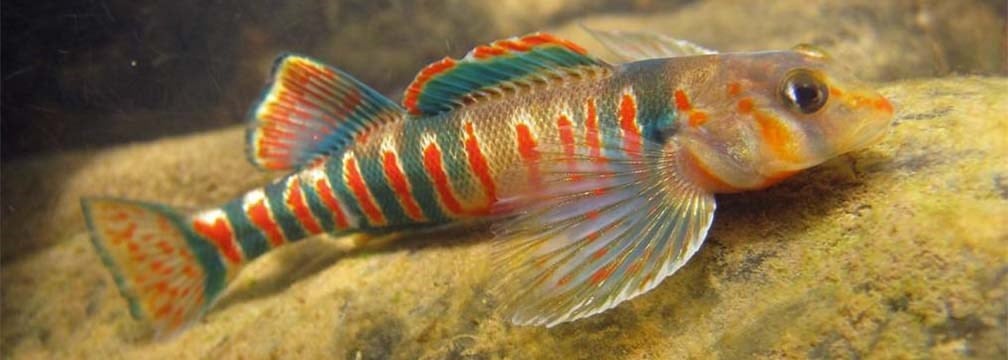Since passage of the Endangered Species Act 50 years ago, more than 1,700 plants, mammals, fish, insects and other species in the U.S. have been listed as threatened or endangered with extinction. Yet federal government data reveals striking disparities in how much money is allocated to save various biological kingdoms.
Of the roughly $1.2 billion a year spent on endangered and threatened species, about half goes toward recovery of just two types of fish: salmon and steelhead trout along the West Coast. Tens of millions of dollars go to other widely known animals including manatees, right whales, grizzly bears and spotted owls.
But the large sums directed toward a handful of species means others have gone neglected, in some cases for decades, as they teeter on potential extinction.
Just do what I do and give it straight to the animals you want. Yesterday I gave a bluejay a dollar and I think he used it on birdseed.
I used to give money to deer and raccoons, but then I saw they just spent it all on cigarettes.
Yeah, it all goes to the tastiest ones.
I take it this is mostly sarcastic, but it can work if people treat it seriously.
People’s desire to hunt, eat, and wear the alligator are what saved it from going extinct in North America.
No, I meant it. Salmon and steelhead trout are named in the article.
Oh, ok, apologies. I saw they were in the article, and guessed they’d be in there before reading it, but sometimes articles like this one get these kinds of jokey comments.
The alligator thing I mentioned is true too. This article seems to have minimal added agenda.
“In my opinion, it’s the best program of protection on the planet,” said Price. “There were 100,000 [alligators ]when it first started. Now we have 2.5 million in the wild and another million on farms. Funding [for the program] comes from consumption.”
I feel this story is a win-win for both sides of conservation, and game management is a good way to properly regulate hunting and also to fund wildlife conservation.
Saving a specific creature is probably not as effective as saving a specific ecosystem anyway. What are you accomplishing saving an animal without saving its food or what it needs for shelter?
I’ve become an advocate of old growth forest through my contributions to [email protected] and I get it’s a tough sell to say, no, spend money to preserve old broken and rotting, bug filled trees, but for animals like owls that must use natural shelter or old nests of other creatures, that’s what they need. Newly placed forests are monoculture deserts that don’t have the variety and structure to harbor life. It takes 100+ years of returning back to the wild to support much life. Until then, they’re only take guys for cutting down again.
The same applies to grasslands and wetlands, etc. These environments are of limited use to us, but they’re essential to the plants and wildlife. How do you sell people on sponsoring a marsh instead of a fluffy panda?
I’m still hopeful for the future of these places, but I fear we’re going to see a lot more failure first.
People are too eager to build. I live near an entire city built on a fucking natural floodplain and they’re shocked, shocked I tell you, when the damn city floods once a fucking year.
On the plus side, a lawsuit was recently won that showed that a Trump-era rule that allowed logging in old growth forests in Washington and Oregon was against Federal Law and has been rescinded.
I hear ya. My town is essentially built on former swampland, and the flooding is getting worse each year.
It’s good to see some victories on presenting y habitat, but it’s crazy the damage we’ve caused so far. Through deforestation and climate change, the feds are planning to shoot 500,000 Barred Owls to try to save the Spotted Owls this year alone. I’ll take a win where I can find it though. 😔
Saving a specific creature is probably not as effective as saving a specific ecosystem anyway. What are you accomplishing saving an animal without saving its food or what it needs for shelter?
Ya, that’s why most funding goes into charismatic mega fauna. It’s a lot easier to say that grizzly bears need all of this land protected and then protect other animals in that land, than to try and protect one clam in a small part of a river. It’s an umbrella strategy, protecting one animal to protect the others in it’s ecosystem. And protecting old growth forests? They already listed the spotted owl and that’s what they are doing. Basically the only old growth forest left in the US is spotted owl habitat, and tons of money goes into legal battles to keep the forest standing. I would be very careful of supporting budget cuts to these umbrella species in favor of smaller, more fragmented projects.
I don’t really disagree, I just wish more people would see the diversity and value of more of the things living around them.
While I’m glad private money is going to protect Spotted Owls and their environment, am I happy federal money is going to kill hundreds of thousands of other owls, plus some Spotted Owls by mistake? Not so much there.
All of this is very nuanced, and I’m glad there are groups and individuals taking on these problems from multiple angles.
There are activists who feel the way you do- that working to save a single species is misguided and there is no point in trying to save it if you destroy the ecosystem in which they live.
Nothing lives on its own. We’re all interdependent on the monocellular creatures on up. We’ve shown time and time again we’re unsuccessful at dictating what nature should do for us, we’d best just leave as much of it alone as possible. Heck, it’s even free to just not do anything bad!
about half goes toward recovery of just two types of fish: salmon and steelhead trout along the West Coast.
Deviation from the norm will be punished unless it is exploitable.
It’s just capitalism being capitalism. We’re worried about those ones because we eat them, we don’t give a fuck about total ecosystems.
deleted by creator
Loaded headline. Really, it should read that protection if endangered species is in desperate need of more funding. Right now, it reads like a strawman that there’s only this zero-sum answer, and more money all together couldn’t possibly be an option.
An argument in contrast, from a very respectable naturalist -
https://www.reuters.com/article/us-britain-pandas-idUSTRE58L1P320090922/
Hah, I’ve read that article! That same sentiment is one that came to me to start my critical thinking about how we try to do conservation years ago.
With the proposal to kill half a million Barred Owls, there have been articles of public outcry to let nature do its thing as well because people don’t want to kill one thing to save another because of what humans have done.
I also learned the Spotted Owl and Barred Owls can breed and they produce hybrid owls, which they currently also kill. Accepting the Sparred Owl may be the only realistic option.
I’m not sure how to feel about that, but it’s interesting to debate.
I don’t necessarily even think it requires more money. Just make zones that are really off limits to any kind of use or development.
Maybe like more and bigger national parks, but ideally just permitted researchers. Like a strategic national ecology reserve. No roads or structures to maintain. No real human impact. Nothing to pay for, just let nature do her thing.
Totally agree, there’s lots of $0 policy options to increase protections. Right there with you, mate!








